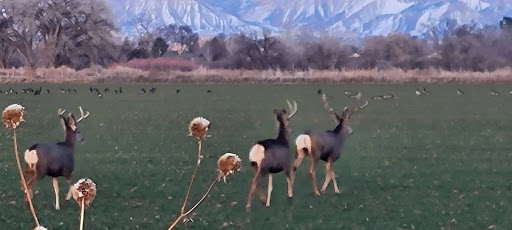On December 18, five gray wolves were introduced to the Western Slope for the first time. This is part of an ongoing effort from Colorado Parks and Wildlife to restore the ecosystem, although some claim it’s doing more harm than good.
Proposition 114, the ballot that approved the reintroduction of wolves, barely passed by only two percent of votes in 2020. After three years of planning, five wolves captured in Oregon were finally released. According to their website, Colorado Parks and Wildlife plans to release 50 or more wolves in five years, all of them having a protected status by the state until the population reaches 200. An article from 9News by Jesse Bedayn reports that the cattle industry tried to delay the release by filing a lawsuit, however the case was rejected in court.
Many studies have linked wolf reintroduction with the recovery of over-grazed landscape and healthier elk herds, along with other positive effects. As Shawn Gregg, an AP Environmental Science teacher explains it: “Like all predators, wolves put ‘top-down’ pressure on the herbivores in the ecosystem. In the absence of predators, herbivores eat up the producers to the point where it can change the landscape.”
By regulating the prey, Colorado Parks and Wildlife hopes to bring more balance to the ecosystem. Supporters of the reintroduction will often point out that gray wolves were native to Colorado before they were killed off by hunters and that in states with wolves, and that wolf predation makes up a very small percentage of livestock deaths according to federal data.
However, opponents of the reintroduction fear that it may lead to hunting difficulties, loss of pets, loss of livestock and property damage. All of these things could also have negative economic effects, especially for ranchers. To help alleviate these risks, a Special Endangered Species exemption act was passed which allows the killing of wolves deemed a threat to livestock, despite their protected status. Ranchers will also be paid up to $15,000 for every animal lost due to wolf attacks according to the Colorado Parks and Wildlife website.
Despite these compensations, many still claim that the risks outweigh the potential benefits, if there even are benefits. Marj Perry, a rancher, writes an article about this very issue in the Sopris Sun where she states that “Wolf reintroduction should be based on fact, not nostalgia. The consequences should be understood. Glossing over tables to make a point sets everyone up for buyer’s remorse.” She goes on to say, “Colorado has a healthy balance of predators, hunters, and elk.” Many opponents, like Perry, are skeptical of the supposed benefits of reintroduction, while others recognize the environmental benefit but oppose the act due to the inherent danger of wolves.
The reintroduction of gray wolves remains a controversial issue. Nevertheless, it seems that they once again inhabit the Western Slope.








